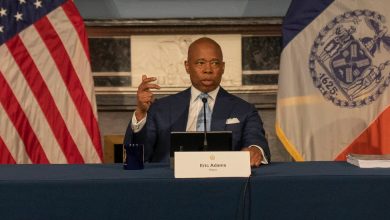The Most Famous Golfer at the Masters Is Black. Why Aren’t There More Players Like Him?

When the Masters Tournament commenced on Thursday, featuring 89 competitors, there was exactly one Black golfer in the field: the one we all know, Tiger Woods. Beyond that, the field for the 88th Masters didn’t look all that different from the previous 87.
This is not what Charles Sifford envisioned when he and Stanley Mosk, the attorney general of California, fought to integrate the Professional Golfers’ Association of America. Sifford, who is often referred to as the Jackie Robinson of golf, became the first Black P.G.A. member in 1964 after a decades-long fight to join the organization that had, for much of its history, stated in its charter that it would admit only golfers “of the Caucasian race.”
Sifford blazed a trial for talented Black golfers such as Lee Elder, Calvin Peete, Jim Dent, Jim Thorpe and, of course, Woods. But 60 years later, their stories of success are still exceptions. The P.G.A. remains woefully inaccessible to Black golfers and has made only marginal and inadequate efforts to diversify its ranks. According to Golf Digest,less than 1 percent of the P.G.A.’s 29,000 members are Black. The P.G.A.’s tournaments and its professional golf shops needs to take concrete steps to look more like the America it purports to represent.
In 2014 the P.G.A. identified diversity and inclusion as “foundational principles” but, in practical terms, that has meant little more than the occasional golf camp or clinic at a public course in a Black neighborhood. The P.G.A. recently partnered with the Advocates Professional Golf Association, which was founded in 2010 to diversify the game, and together they will host 18 tournaments this year. But the P.G.A. must do more to lead the way in action and by example, promoting inclusion at every level. Until private country clubs, elite prep schools and Division I golf programs actively recruit and train Black golfers, Sifford’s legacy will remain unfulfilled and the game will continue to be dominated by white players.
For the decades that Sifford and other Black golfers fought to become P.G.A. members, they dealt with bigotry, death threats and countless humiliations while simply trying to play golf with and against the best players of the era. Because the P.G.A. had explicitly codified racial discrimination in its bylaws, Black golfers not only couldn’t compete as PGA Tour members, they also couldn’t find jobs in P.G.A.-affiliated pro shops — which, until the 1950s, had been the traditional route golfers took to join the P.G.A. The P.G.A. continually thwarted the efforts of Black golfers, abetted by star players who failed to speak up for inclusion.
The battle to integrate professional golf stalled until Attorney General Mosk, enraged by Sifford’s exclusion from the P.G.A., threatened to sue the association to prevent it from holding its segregated tournaments in California. Several other state attorneys joined Mosk in the fight, and their resolve forced the P.G.A. to eliminate the Caucasians-only clause. The removal of what Mosk called “this obnoxious restriction” paved the way for Sifford to become a full-time member.




